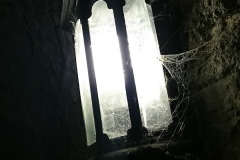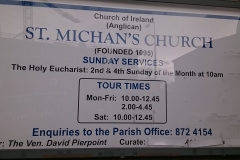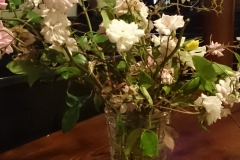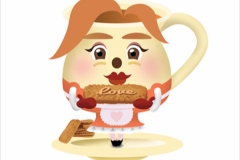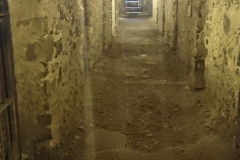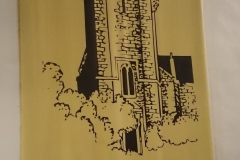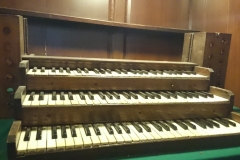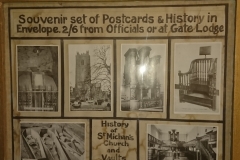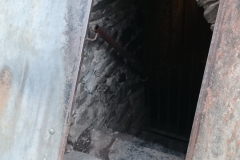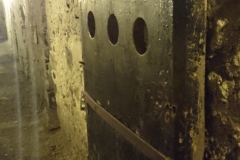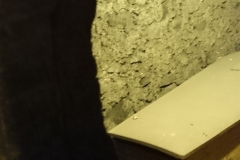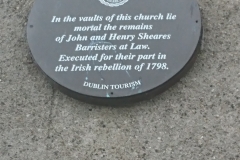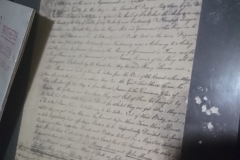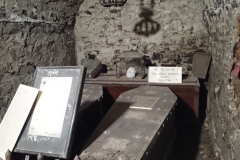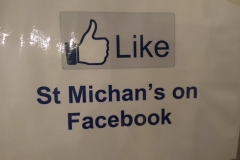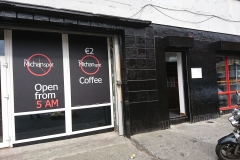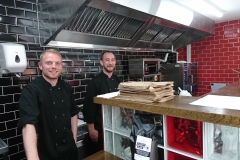What a difference a vowel makes!
I bet you, like me, have scoffed and scalded (subconsciously, of course!) our Ancestral Brethren from across The Pond about what a mess they have made by removing the letter ‘u’ from such words as: ‘humour’ (humor); ‘colour’ (color) and ‘behaviour’ (behaviour). It’s as if the words have been disrobed, or like Samson, weakened after having his hair cut off?
A totally unnecessary interference, Old Sport.
(And don’t get me started on their pronunciation of ‘tomato’!)
Admittedly, learning (to spell within) the English language can be an inconsistent puzzle, but, that’s just something we have gotten accustomed to, and certainly, it doesn’t need changing…or does it? After all, when times get difficult we have Google and Thesaurus!
Still, what is it about, the letter ‘u’?
In another case, the continuous misappropriation of this letter has even angered a whole nation! So much so, there’s even a hashtag highlighting this anomaly: #itscolombianotcolumbia
Colombian natives are sick to the back teeth of renowned global media institutions continually spelling their country’s name wrong! Imagine.
Just, what is it ‘bout the letter ‘u’???
In Dublin (especially), we have many ways for addressing our mothers, typically dictated by our postcodes/class dynamics. You’ll typically hear ‘mammies’ calling their chizzlers in for their dinner in working-class areas of Dublin, whilst the more affluent areas of the Capital will chime with the voices of the Dublin ‘mummies’. It was this localised and telling manipulation of the letter ‘u’ which provided the inspiration for this article…and of course, the small matter of possibly one of the most understated hidden tours open to the public in Dublin.
What is the difference between the Irish Mammy and The Irish Mummies?
The Irish Mammy is synonymous with the warmest of welcomes (generally!), copious amounts of tea, biscuits and advice should you ever need them, a baker’s apron (coated with flour), a reverential presence within the household, loyalty and a wooden spoon. The wooden spoon is the favoured utensil for both baking and discipline.
She will be commonly heard saying phrases such as:
1. ‘A letter came in the post for you. Will I open it?’ (#shesalreadyopenedit)
2. ‘Who is she? The cat’s mother?’
3. ‘Who said mass?’
4. ‘If you fall and break your legs, don’t come running to me!’
I’ve no idea what Egyptian Mammies are like, but just like the North Africans, we have our own brand of Irish Mummy! You will find them lying silently in the Crypt of St. Michan’s Church. (Certainly not akin to the living, breathing ones you’re liable to see ‘nipping around’ Malahide, Dalkey or Blackrock Villages!)
St. Michan’s Church was founded in 1095 and originally built to serve a Viking population lately expelled from within the city walls. For more than five centuries, it remained the sole Dublin parish, north of the River Liffey.
Through the church halls, there is a sense of history. Artefacts from years past are present (in every nook and cranny), audibly complimented by creaking sounds coming from the dark wood panelling and benches with the musty (certainly not unpleasant!) smell of the ages. Unconfirmed rumours that Handel composed and certainly played his ‘Messiah’ at St. Michan’s abound, and the organ within the church with its breathtakingly detailed wooden sculpture are a delight to witness.
The church still holds Church of Ireland services to this day, and the organ still gets played.
However, the real fun on this ‘Hidden History Tour’ starts when you are brought: underground. Tours of the 900-year-old crypt happen upon the beckon call of ‘Peter’ the Tour-guide (there’s no set times!). At his command (and it is a command), you wait outside in the church grounds, as he prepares the narrow stone stairway and tunnel for our ‘safe descent’.
As he does this, we are left standing to look at each other, wondering what exactly is in store for us…
The first crypt has only one illuminated chamber. Inside we find 4 open coffins, with dust-coated bodies inside. The Mummies. Lying still, within touching distance. A natural combination of the elemental conditions has led to the preservation of the bodies, so much so that the fingernails (and toenails) are still present and clearly visible. The mummies themselves are ca. 400 years old. Some of them have bodily abnormalities, which are best described by Peter, in some cases, as a result of practicality and some as punishment.
Photography of the mummies is not permitted, hence respectfully, there are no images of them here. However, I can enthusiastically say, that they are well worth seeing.
Continuing on the tour, moving back above-ground, among the whisperings within our group, we are eventually called (commanded!) into the second crypt. This crypt is essentially a longer cobwebbed tunnel. Many chambers, some illuminated, some in darkness line both sides. All chambers hold mysteries of years past. Broken caskets, stacked ominously atop of each other, wooden pieces (are they bones?) can be formulated through the darkness. The silence is eerie. The history is screaming at you.
The illuminated chambers signify that they are no longer being used by the families of the deceased. One such chamber houses the Lords of Leitrim, with a mysterious unmarked casket inside. Why was this casket unmarked? Peter, our eminent tour-guide has all the answers. You see, the star of the tour is Peter. He delivers the historic tales and mysteries of the church (and crypt) seamlessly; with passion and mischief!
The darkened chambers are kept so, for two reasons. The respect for the dead and the respect for the living. The families of the deceased within these chambers still have the keys to them and may use them for the future burial of the loved ones. Consequently, without written permission, the chambers remain undisturbed.
The final chamber which we visit has significance for the Irish amongst our group. After the commemoration of the 1916 Rising, this chamber houses the history from an equally bloody (and ‘unsuccessful’) uprising. Inside we find the death mask of ‘Wolfe Tone’, the Protestant Rebel leader of the United Irishmen. He had attempted to organise a rebellion alongside the French to remove our Imperial Neighbours from Ireland. Also within this chamber, are the caskets of two other rebels from 1798 – The Sheares Brothers. Both men were intellectual, highly educated, graduates from Trinity College. Both were ‘hung, drawn and quartered’ for their roles in the 1798 Rising. The handwritten ‘Order of Execution’ sits alongside the rebel’s caskets.
It’s recommended you take the time to read this harrowing and sombre artefact from Our History and indeed the last words of John Sheares’ as he stood awaiting sentence in the dock (see references below).
Similar to coming out of a movie theatre as a child, our eyes re-adjust to the ambience above ground and the daily chaos of Contemporary Ireland.
The Personal-a-Teas Community Promotion:
Tour visitors will receive special discounts and treats at a local café, The Michan Spot, upon an exhibition of their tour tickets.
Also, café visitors will receive a discount on their tour of St. Michan’s Church ticket, upon showing their receipt of purchase from the café.
‘Community Spirit’!




